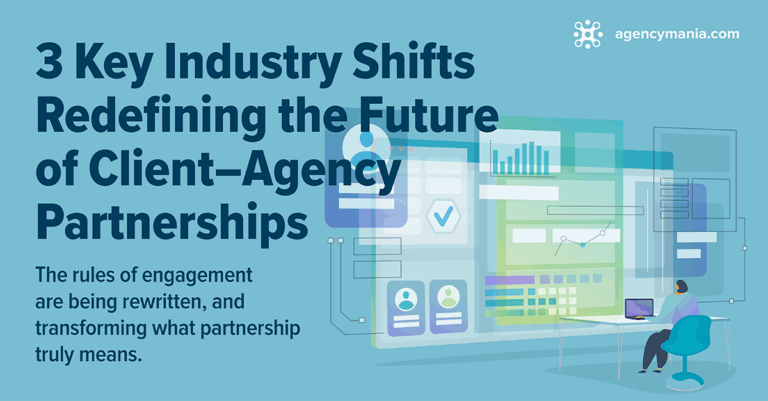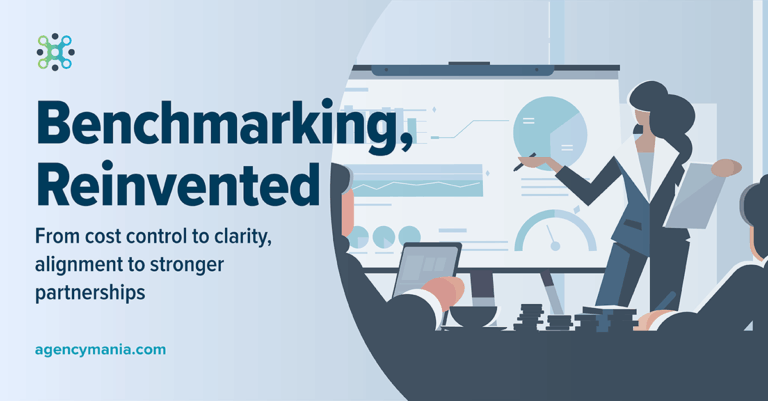Ageless principles advertisers should follow to give agencies productive performance feedback and drive meaningful improvements.
The value of annual or semi-annual performance reviews is now universally understood. They are opportunities for the client and agency teams to provide useful feedback to improve the work relationship and the overall partnership.
Few, if any, would risk bypassing a proven business practice known to consistently strengthen the collaboration between marketers and agencies and improve the effectiveness of the work produced throughout the year. Giving and receiving feedback is a fundamental commitment to continuous improvement and mutual accountability, when applied to increasing value from employees or business partners.
Yet, there are some ageless principles that even the most sophisticated organizations fail to apply consistently when implementing a performance evaluation program. Let’s take a closer look at common mistakes made when designing such programs and best practices on how to provide effective, actionable FEEDBACK.
F – Focus on what really matters (with the right categories and questions)
In client/agency relationships, not everything matters. Too many questions contribute to survey fatigue and negatively impact participation. And naturally, low participation endangers the value of the entire process. Selecting the most pertinent questions allows both sides to zero down on essential expectations.
A common best practice is to have a consistent set of questions across disciplines and a subset of questions specific to each functional area (PR, events, media, creative, CRM, social, etc.). This allows clients to compare agencies on a common set of attributes without compromising the ability to focus on the most relevant category-specific questions.
E – Encourage honesty and transparency (partnership principles and culture of accountability)
For agencies, the performance feedback process can prove to be intense. Providing too direct, open feedback to clients can backfire leading to unwanted relationship tension or vengeful actions. After all, exposing low ratings or direct complaints to senior management could lead to difficult internal conversations. This is true for agencies as well. Yet, without honest and transparent feedback, results can be vague, findings inconclusive, and no clear path to improvement found.
Mutual accountability means that both parties accept feedback as useful only when it’s calling out precise areas of improvement. It doesn’t imply or encourage unnecessary finger pointing, but it does allow for a safe environment where feedback is valued.
E – Exercise diligence (with proper context and timing)
The concept of partnership is anchored by an acute sense of responsibility. Partnerships flourish when people on either side feel committed and engaged. Working carefully and consistently to provide feedback is one of those shared responsibilities. Providing diligent, constructive input is key.
Client and agency teams should be documenting their feedback by taking notes or conducting postmortem meetings throughout the year, so it can be readily available and easy to leverage when the performance evaluation process takes place. If an issue has already been resolved, note it in your feedback.
D – Drive actionable insight and action plans (with insight analysis and planning)
When dealing with large numbers of comments, sentiment analysis can facilitate the organization and process. Word clouds, sentiment analysis, and similar tools can help surface non-structured data and relevant input otherwise too difficult to synthetize.
A combined review of the scores and commentaries can then inform the analysis which aims at identifying key findings, such as areas of strengths and weaknesses/issues. The insight is then used to develop action plans to course-correct, improve, or strengthen the work and partnership.
B – Balance participation and process (with a mid-year touch point and adequate representation)
Having ample participation requires an effective communication plan that might involve senior level executive endorsement, outreach communications, and reminders. People are more likely to participate if they see value in teams owning the results and committing to seeing agreed action plans through. Having a midyear touch point in addition to the annual year-end survey is important to avoid surprises and give teams plenty of time to course correct.
A – Accept that effective feedback must be reciprocal (with commitment to 360-degree process and to receiving feedback)
Most performance reviews conducted on behalf of Fortune 500 brands are bi-directional (client>agency, agency>client), allowing both parties (clients and agencies) to provide feedback about their experiences. In some instances, clients may ask agencies to conduct a self-assessment (agency>agency) so they can compare their assessment of the agency with the agency’s self-assessment, identifying potential gaps: If a client is scoring low, but the agency is scoring itself high, it will inevitably lead to a fruitful conversation about the differences in scores.
It’s not unusual for an agency to rank themselves high on a particular attribute (e.g., collaborating with other roster agencies) while the client is rating them very low. Expectations are misaligned, and this warrants some course correction. Receiving feedback is often harder than providing feedback. It’s where the real work happens.
C – Consider how you (client) impact their (agency) ability to perform (and understand interdependencies)
Expectations must be reasonable and taken into consideration. A common example is a client stating that they expect their agency partner to be more innovative yet failing to realize that budget limitations are preventing the agency from seeking innovative ideas outside of current engagements. Clients also often ask agencies to offer more breakthrough work yet fail to acknowledge that their risk-averse culture and/or strict brand guidelines seriously limit the agency’s ability to do so.
There are countless examples like these that show how critical it is for both parties to understand how their behavior, ways of working, or decision-making has downstream implications on the agency’s aptitude to perform and meet expectations. Once these dependencies are vetted, both teams can collaborate more effectively.
K – Knock it out of the park by investing time and resources to set up an effective program (with adequate investment, resources, and expertise)
Finally, designing and implementing a robust performance assessment program requires financial and/or human resources. Some brands have dedicated resources within agency relations or marketing procurement teams to run this end-to-end process, from survey administration and management to analysis, readout sessions with agencies, and action planning.
Others simply choose to outsource that process. In some instances, brands choose to rely on independent third-party service providers to facilitate the review of the results and make recommendations based on industry best practices. In either case, headcounts and/or budgets must be adequately secured. Getting feedback on the program itself and its effectiveness is also wise, so improvements can be made regularly.
Overall
Even though agency performance assessments are now standard practice among organizations, there are vast nuances in how they are implemented or how they perform. Successful programs seem to share common characteristics and ageless principles: participation transparency, and actionable feedback. Give and receive feedback like a pro and see your partnerships flourish.
Read it published by the Association of National Advertisers
Download a PDF copy of the article
Written by Bruno Gralpois, ANA Instructor for the Marketing Training and Development Center, and co-founder and principal of Agency Mania Solutions.







